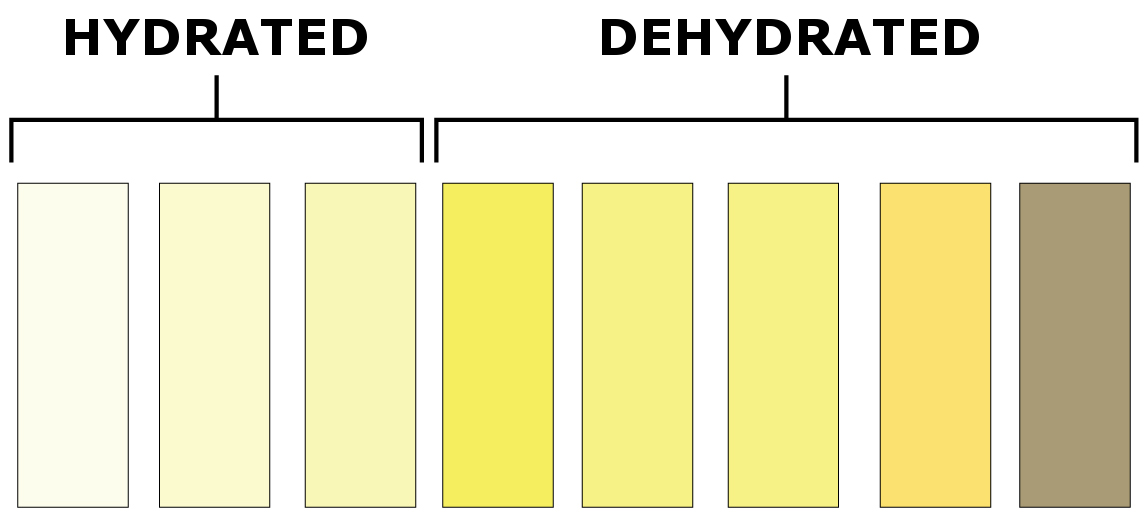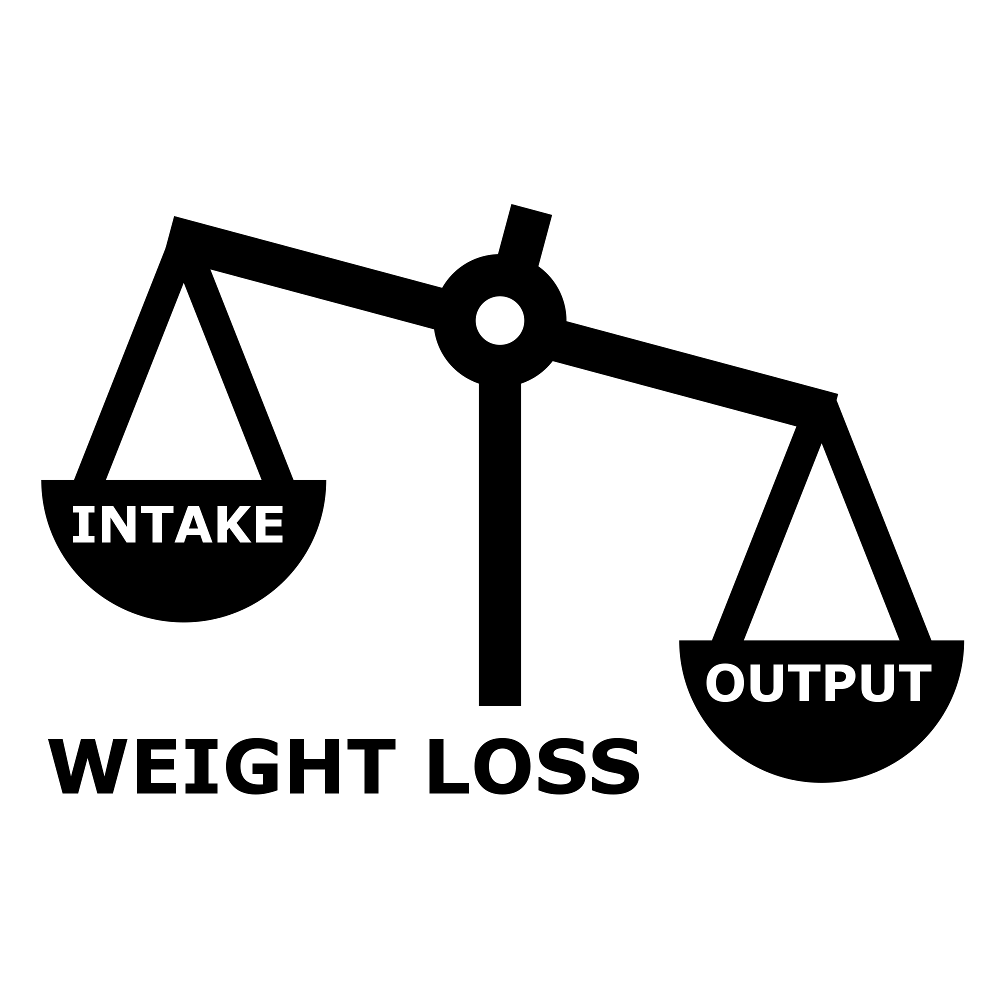Your weight is not the be-all and end-all of your health, but it is a major component of your physical health. It almost certainly affects your self-image or how you feel about yourself. Assuming that weight loss is at least one of your goals, if not the primary goal, in learning about fitness we have to begin with how to lose weight.
Your weight is determined by the balance of a simple equation:
INTAKE– OUTPUT = WEIGHT GAIN/LOSS
Calorie INTAKE is a measure of what and how much your body takes in through the foods you eat. Calorie OUTPUT is a measure of how many calories you burn each day through activity and exercise.
The balance between these two factors, input and output, determines your weight. If you eat the same number of calories that you burn in a day, then the equation is equal and your weight stays the same. If your intake outweighs your output, you will gain weight. If your output outweighs your intake, you will lose weight.

With that information in hand, it is obvious that there are three basic ways to regulate your weight. You can take in less calories, you can burn more calories, or you can do a combination of both.
Basic Nutrition
It’s important to start with a knowledge of basic nutritional principles. Nutrition is an explanation of how food affects the health of the body. All food is comprised of macronutrients which include proteins, carbohydrates, and fats. These macronutrients provide calories which fuel the body and give it energy, and each play specific roles in maintaining physical health. Foods also supply micronutrients such as vitamins and minerals which do not provide calories, but which also play important roles in physical health.
Calories
A calorie is a unit of energy commonly used in nutrition to define the amount of energy the body will receive from a given unit of food. Without getting into the chemistry of it, what you need to know is that one gram (1g) of protein and one gram of carbohydrate contain 4 calories, and one gram of fat contains 9 calories.
Carbohydrates (Carbs)
Carbohydrates are found in potatoes, beans, fruits, oats, and breads and are best when high in fiber. They can come in the form of sugars, fibers, and starches, and they provide energy and fuel for the body in the form of glucose (a simple carbohydrate). Unprocessed or minimally processed whole grains, vegetables, fruits, and beans are the best sources of carbohydrates while unhealthier sources like bread, pastries, sodas and other processed or refined foods contain more easily digested carbohydrates and contribute to weight gain, interfere with weight loss and promote diabetes and heart disease.
Proteins
Protein is found in meats, eggs, beans, nuts, and seeds and are best when lean. They provide the body with amino acids which serve as the “building blocks” for growth, development, maintenance, and repair of bodily tissues. Protein provides the structure for muscle and bone, repairs tissues when damaged, and immune cells function. As such, proteins are essential when exercising (especially lifting weights) since they are the building blocks which repair muscle. Proteins can also be a source of energy for the body when the energy from carbohydrates is absent or limited.
Fats
Dietary fat is found in oils, coconut, nuts, milk, cheese, and meats. Fats contribute to cellular structure and membranes, insulate the body, and assist in the absorption of vitamins. Fats are also essential in helping the body to store excess energy, but too much fat can lead to weight gain and a variety of health problems. There good fats (such as monounsaturated and Omega-3 fatty acids) and bad fats (like trans-fats and saturated fats) and it is important to identify the various sources of each and adjust your diet accordingly.
Vitamins
Vitamins are organic compounds that the body needs in small amounts but which it can’t synthesize on its own. Most need to be obtained from foods, but there are a few exceptions such as Vitamin D which can by synthesized by the skin with sufficient exposure to natural sunlight. Vitamins aid in energy production, healing, immunity, and skin and eye health.
Minerals
Minerals are inorganic compounds that the body needs in small amounts but which it can’t synthesize on its own. They are more easily obtained from the foods we eat as they do not break down when foods are cooked like vitamins can. Minerals are essential for cardiovascular health and skeletal structure.
Hydration
Not to be overlooked, water is an essential element in the diet as sufficient water is necessary for maintaining body temperature, waste removal, and joint lubrication. The typical recommendation is that the average adult should drink 48-64 ounces of water daily, but that varies on many factors such as activity level. The best way to know if you are getting enough water is to examine the color of your urine and compare it to the chart below.

Calorie Intake
Regulating your intake is the basis of KILTED! Principle #2 – Improve Diet. As mentioned in the first part of the weight equation, your calorie intake is determined by both what you consume and how much you consume, and you can adjust your intake by changing one or both of those factors.
What should you eat? We all know that there are some foods that are better for you than others, and there have been volumes written on which ones to select and why. Knowing what to eat can be a challenge, but the key is finding the right combination of proteins, carbohydrates, and fats to balance with your level of output. Only through research and experimentation will you find what works best for you.
How much should you eat? Today, we live in a nation of excesses. When McDonalds started its partnership with Coca-Cola in 1955 they offered a 7-ounce drink, their only size at the time, but by 1994 they put “supersizing” on the menu offering more fries and the 32-ounce drink. The convenience store 7-Eleven had already upped that total by offering the 44-ounce Super Big Gulp in 1984, the 64-ounce Double Big Gulp in 1989, and the 128-ounce Team Gulp in 2006 – that’s a gallon of soda. For comparison, the average adult stomach can only hold about 30 ounces.
If it’s not obvious that you don’t need a gallon of soda, then I don’t know if I can help you.
Although I have focused mainly on what and how much you eat, there are many other factors involved with proper nutrition. When you eat can be just as important. For decades, we have been told about the importance of starting the day with a well-balanced breakfast (mainly by the commercials whose goal is to sell us cereal which is an important part of that well-balanced breakfast) to fire up your metabolism. But does that mean that if you skip breakfast your metabolism will sit dormant until fed? For optimal results, food intake needs to be timed relative to when the nutrients it will provide will be needed by the body.
What is the take away from this? Unless you are institutionalized, you have direct control of the foods you eat. You are the one who physically puts the food into your mouth, chews it, and swallows it. Therefore, you have direct control over whether or not you change your eating habits. You can try to argue now that you can’t afford better foods, but that’s just an excuse – Kill it now and move on. There is always a way to eat less or to eat healthier.
Calorie Output
Exercise is the main method for burning calories and losing weight. Regulating output through exercise is the basis of KILTED! Principle #3 – Lift Weights and KILTED! Principle #4 – Trek Out and are covered later. The basic process of exercising is engaging in activity which burns carbohydrates and damages or breaks down your muscles (catabolism) followed by a resting period where proteins are used to rebuild or repair the damaged muscle (anabolism). The goal of weight lifting, or resistance training, is on straining the muscles so they can be rebuilt, thus increasing their strength. Cardio training involves keeping elevating the heart rate above its normal level and keeping it there for an extended period, thus burning more energy.
Better Together
While it may have been the worst slogan for the campaign against Scottish Independence a couple of years ago, Better Together is the best way to look at the weight equation. You can choose to regulate your input or your output, but you’ll get the best results if you regulate them both together through diet and exercise.
